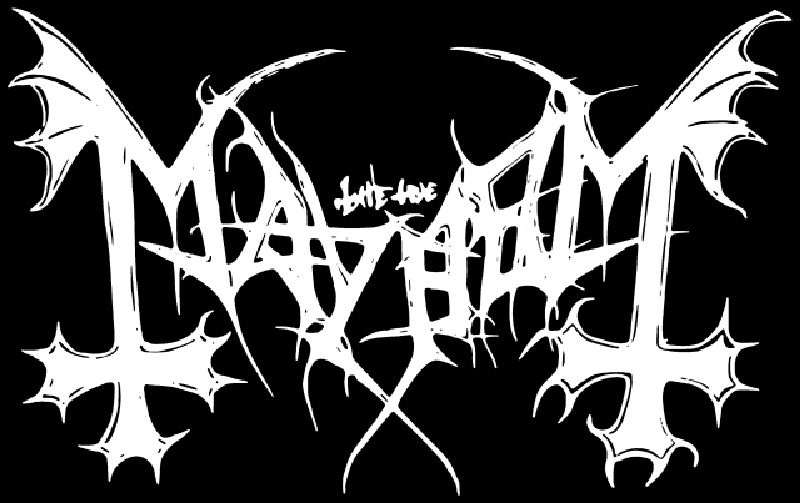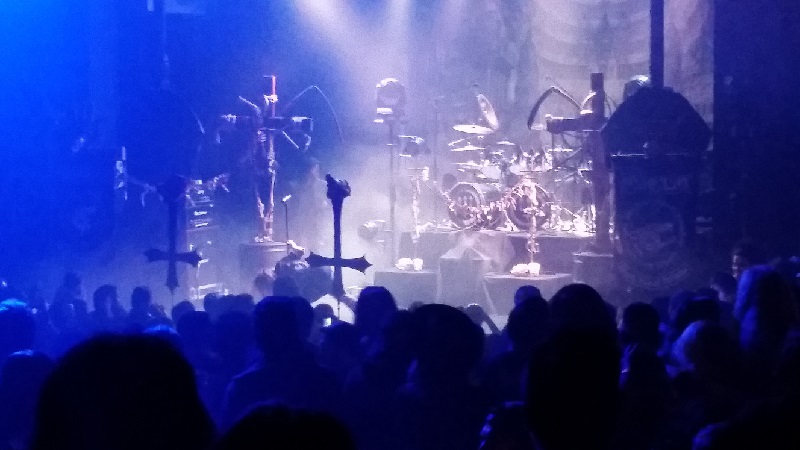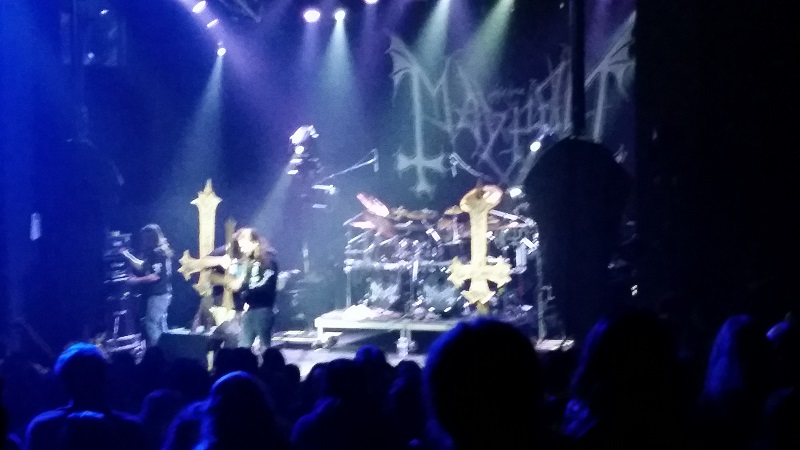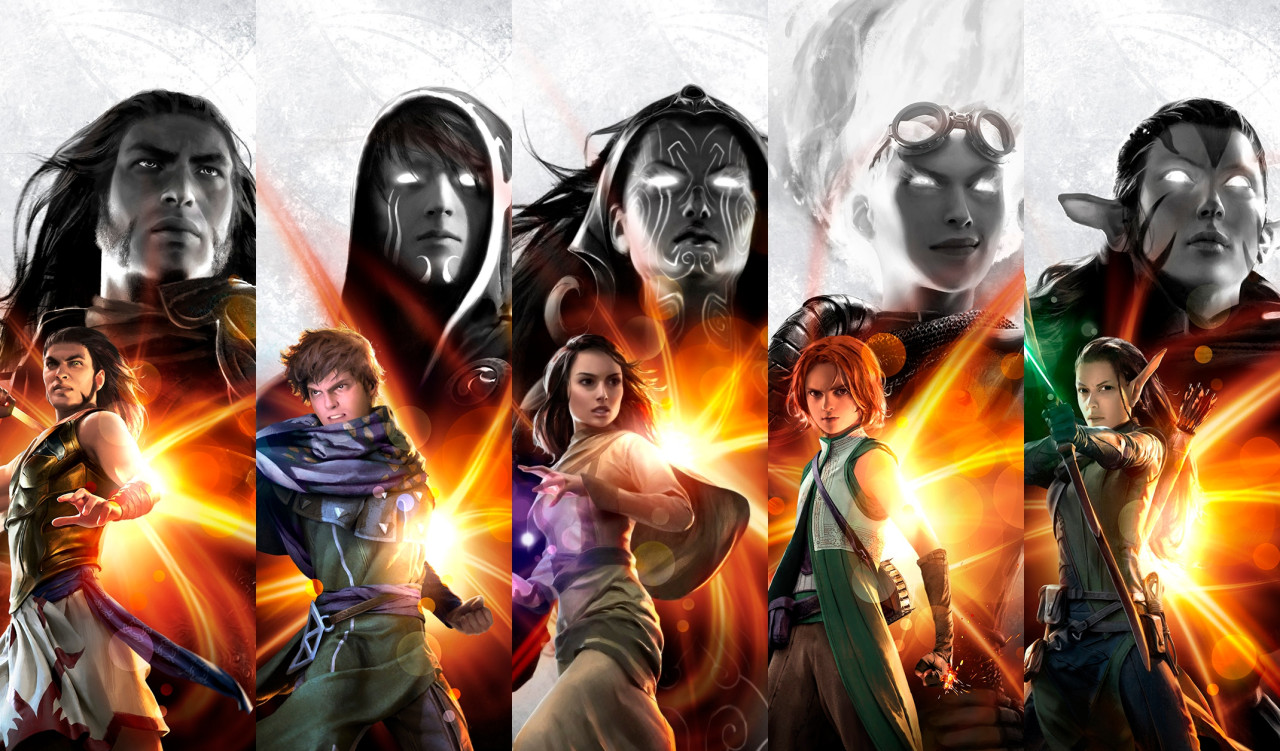Even if you aren’t familiar with the black metal band Mayhem, you’ve probably heard of them. Sometimes known as “the True Mayhem” to distinguish themselves from other, lesser Mayhems who would dare usurp their throne, much of their notoriety stems from their turbulent, violent early history. In 1991, their vocalist at the time killed himself with a shotgun. Their guitarist took pictures of the body, one of which somehow found its way onto a now-infamous bootleg album (Warning: NSFW). That same guitarist was then murdered by another member of the band, and he went on to serve 21 years in jail for the 23 stab wounds inflicted on his bandmate. But somehow, against all odds, Mayhem the band survived. And now I was going to see them live and in concert.
As NitWitty’s resident metal music enthusiast, I wanted to provide a firsthand account of what it’s like to attend one of Mayhem’s shows. More importantly, I wanted to see whether their live performance would live up to their controversial history. For a metal musician like myself this is an added bonus, as I am always looking to see how the pros perform, and the accomplished musicians in Mayhem was something I was looking forward to seeing. Win-win, right? The only way to find out was to see for myself.
Out from the Dark
Mayhem would be playing at a place very near and dear to me, a place called The Observatory, located in Santa Ana, CA. Nine years ago, this venue was known as the Galaxy Theatre. For a young musician (and his young musician friends), this was the place where a young metalhead’s dreams came true. All our favorite obscure European power metal bands seemed to play there, drawn to the magnetic pull of… well, I’m not exactly sure. I don’t have to tell you that Orange County lacks the rockstar appeal of other, more glamorous locales. But the OC is closer and cleaner, so it works for me just fine. Chris, my good friend and fellow bandmate, and I had seen many bands at the old location over the years. We were hoping to get a similar experience from this one.
We pulled into the Observatory’s second lot, paid for parking, and started walking the two blocks to the venue. Groups of fans, long-haired and clad in black, stood next to their cars drinking beers and energy drinks, trying to get a good buzz going before the show. I’ve never really been one for drinking during live music, as my attention is usually focused on watching the drummers, studying their technique. But everyone gets something different out of these shows. I’ve found that many of the rowdier concert-goers enjoy using their buzz to great effect in the mosh pit, turning them into pushing and shoving machines immune to pain and reason.
If you attend many metal concerts, you’ll notice the fanbase is comprised of a mostly male audience. They commonly wear black band shirts, which are sometimes accompanied by denim jackets. Long hair is another common sight, the by-product of a rebellious counter culture from more conservative days. But modern metal shows like this one now have their fair share of female fans. It was the middle of November, so I questioned many of these ladies’ commitment to dress in short skirts and long, black boots. But I didn’t linger too long on these details; my wife occasionally reads my articles (hi, honey!).
Don’t get me wrong – I have long hair myself. My metal concert attire is usually a shirt in some varying shade of purple (counter-counter culture, yeah!) But I wore black for this occasion. To be perfectly honest, I was a little nervous about this one. You see, the black metal subgenre of metal has a reputation for being elitist. The visual aspect and overall metal aesthetic is a big part of this particular genre’s culture. Black clothes, white facepaint (known as corpse paint), and spiked armbands are common wardrobe for many black metal musicians. The music itself is just as antagonistic, characterized by frenetic blast beat drumming, rapid tremolo guitar picking, and screeching vocals. This nigh-unlistenable wall of sound is inherently dark and dreary, even by metal standards. Much of this sound is derived from Mayhem’s first studio album, a genre-defining black metal masterpiece entitled De Mysteriis Dom Sathanas. That’s “Lord Satan’s Secret Rites” in Latin. Edgy, I know.
I’ve been to plenty of metal concerts before. However, this was my first decidedly black metal show. And this was Mayhem, after all. I did not know what to expect, but I could imagine quite a bit. You see, I’d heard… things.
Mayhem’s live shows are known for being notoriously evocative. Vocalists would cut themselves on stage and swagger about with severed pig heads. At one concert, razor blades were supposedly thrown into the audience. In 2003, a fan was injured from getting clocked in the noggin by a severed sheep’s head, which resulted in Mayhem being (unsuccessfully) charged with assault. In many cases their reputation would precede them, such as a tour cancellation in Poland in 2006, barring them entry on account of their dark lyrical subject matter, which includes satanism, anti-religion, anti-everything, and philosophy. For all the violence that seems to follow them (both within and without), I find it amazing the band is still around to this day.
They are the reason (in part, at least) that metal music has such strong associations with all things morbid and evil. But having recently dived onto their entire discography, I found that they chose to continue on despite their tragic setbacks. Controversy remained an important part, but time had seemed to distill their focus to what really mattered – making and playing music.
Still, there was no way I could really know. You never really know what might be in store for you at a live show.
The View from Nihil
Once inside the venue, we scouted out an ideal spot. Picking a viewing spot is a big deal at metal shows, especially if you’re there to observe, as I was. We were lucky enough to find an opening right against a bannister. I love this type of spot for one reason: there’s no one in front of you. Metalheads can be on the tall side, and you really don’t want to be bobbing back and forth trying to see the stage. So eliminating the possibility entirely is a big deal. Additionally, this lets you headbang to your black heart’s desire, as you won’t risk getting your nose broken from someone’s flailing elbows in front of you. And you get a great angle for some George Fisher-style windmilling. So with our spot secured, we waited for the opening act to start.
Opening bands can easily follow death and taxes as constants in life. This is even truer for bad opening bands, but I was looking forward to the ones at this show. Up first was a band called Rotting Christ, which, silly name aside, is one of my favorite black metal bands. Give ‘em a break, willya? They made the name in 1986 when they were youngins, and they came all the way from Greece to play a 30 minute set. English is not likely their first language, so you can’t really blame them if their name seems a bit heavy-handed. I had seen them once before about eight years ago, and I’d been looking forward to seeing their unique brand of melodic black metal ever since. Rotting Christ ended up playing a handful of tracks from their latest release, the excellent Kata Ton Daimona Eaytoy, as well as a few cuts from older albums. Most Rotting Christ songs share a similar motif – elements include hypnotic repeating melodies and guttural chants. I was surprised to see the chants performed not by a pre-recorded backing track as is sometimes the norm, but by the band members themselves. These were performed with gusto, fists often raised triumphantly in the air, and they got the audience in a great mood. The end of their set came way too quickly.
Next up was a band called Watain. Their 2013 release Wild Hunt had gained a lot of praise from the press. I usually try to keep my finger on the pulse of stuff like that, but I had somehow managed to miss this one despite all the good things I’d heard. I was excited to finally see what they had to offer. Their stage dressings certainly set the mood: pigs’ heads impaled on upside-down crosses; skeletons hanging from mock crucifixes; an ominous-looking altar set before the double kick drums. They certainly appeared to be a fitting band to follow in terms footsteps of Mayhem’s legacy. But when Watain finally came out, I found my enthusiasm waning a bit. I found their music very derivative, hitting all the notes that modern black metal bands have used for decades without adding anything new. You could make the argument that most music genres are guilty of this rehashing the same musical tricks, but in black metal, and in Watain specifically, these elements feel woefully uninspired. The tremolo-picking, blast beat drumming, and harsh screeches that define the genre are exactly what makes many black metal bands tiresome to me. Some may really get off on it, but I’m a bit more particular. Guess that makes me a bit of an elitist; how very black metal of me!
Watain ended on a very sour note. A fan was crowd-surfed all the way to the front of the stage, so far that he knocked over one of the band’s carefully placed pig-headed crosses. Upon noticing this the Watain vocalist stopped his screeching, grabbed his mic stand, and began slamming it into the poor sod who was being helplessly retrieved from the crowd by security guards. “What the fuck?” I thought. This from a dude who not more than five minutes ago was dedicating songs to the “disciples in the front.”
I know what you’re thinking: this is a metal show. Aggression and intensity is a big part of what makes metal music work for a lot of people. But turning on a fan like that – a paying fan, just enjoying himself and getting punished for an honest accident – is completely out of line. Way to overcompensate, bozo. You’ll never have the reputation Mayhem has, no matter how many demon-head skulls you parade around on stage with. What began with measured excitement for the band has been marred by this pretty scumbag act. It didn’t help that the next ten minutes were spent with the same punkass performing what could have been an entirely legitimate satanic ritual, complete with candle lighting, bowing, and an ominous backing synth track. The whole performance was so incredibly ham-fisted, I could feel my eyes rolling so far back they saw the skulls of people in the back row.
With that travesty blessedly over, it was time for the main attraction. As the techs set up the next load of equipment, I noted how tame Mayhem’s stage props seemed compared to Watain’s. A few upside down crosses – blasphemous par for the course at this point. Nothing so elaborate as Watain’s leftover Halloween decorations. But I figured Mayhem isn’t out to prove anything anymore. They pretty much founded the genre of black metal, and therefore transcend much of the visual aesthetics other black metal bands use. From what I’d read online, most of them no longer used corpse paint, a mainstay visual signifier of many black metal bands. Some of the apprehension I’d felt at the beginning of the night began to fade. And as a stage hand signaled the sound booth to drop the lights, that apprehension faded completely.
Great Work of Ages
Mayhem preceded their set with an intro track off their 1987 demo, a song entitled “Silvester Anfang.” It’s a silly instrumental that isn’t so much a song as it is a series of aimless drum rolls, layering on top of and looping back in on each other. But from the explosive opening of their setlist proper, a hauling song called “Funeral Fog,” it was immediately apparent to me: Mayhem was here do one thing, and that thing was kick ass.
Another little aside first. The difference between opening bands and headlining bands is usually one of veteran status. Professional musicians who have been doing the live circuit for a while usually get pretty comfortable playing in front of hundreds of people every night. For bands like Mayhem who have been around for 30+ years, that’s a lot of experience clocked in on the stage. You’ll get rare situations where older bands like Rotting Christ open up shows because their popularity with the young, hip, and most importantly paying crowd isn’t as high as the hot, new flavor of the week (hey, Watain!). So the difference between headliner Mayhem and opener Watain isn’t just in their stage dressings but the way they feel.
Mayhems set began at roughly 11 PM. A bit late, even by headliner standards, but they began ripping through songs. Granted, they are all in their late 40s, so it was probably past their bedtime. (It was definitely past mine.) But Mayhem played with the exuberance and effortless skill that seeing professional bands always reminds me of. The setlist contained all the classics off their major releases throughout their 31-year career. A good spread, dominated mostly by De Mysteriis, which surprised no one; it’s their biggest, and many would claim, their best. What did surprise me were how much I enjoyed the songs played off their 1987 demo, Deathcrush. The title track had me grinning ear to ear, a reaction I wouldn’t have guessed I’d get from such a dark band. Part of it could be from the energy the band emitted. They weren’t jumping around the stage like maniacs; they didn’t have to. Guitarists Teloch and Ghul, both recent additions to the band yet accomplished metal musicians, played with the confidence of longtime members. I appreciated that they didn’t seem like they had to resort to heightened stage antics to catch up to the band’s veteran members. Teloch played at stage left-center with an air of modest yet intense focus, while Ghul, masked by a black hood, seemed to be comfortable off on stage right. Vocalist Attila was attired in a musty-looking brown jacket, his face painted white with smears of blood, the sole member of the band still into theatrics. He definitely stood out from the other more normally dressed members of the band, but that’s kind of his thing.
The last two members of the band are the most veteran. In the back, holding the whole band together, was Hellhammer, the drummer. Behind his monstrous wall of toms and cymbals, he played like a force to be reckoned with. Hellhammer’s technical playing is well-documented on all of his many drumming projects, and I was pleased to see his skills translate perfectly to a live setting. Tastefully misplaced snare hits and thunderous tom rolls broke up the routine blast beat drumming black metal is known for, putting Hellhammer on another level of musicianship. I appreciated the small flourishes he added to songs that were before his being in the band, as well as the improvised parts (such as a killer stop during “Freezing Moon”) that only a live show can properly convey. Finally, bassist Necrobutcher, the sole founding member of the band, stood front and center. To me, this marked him in a position of honor for two reasons: 1) center stage is usually where the vocalist calls home; and 2) bass isn’t something that’s usually appreciated to its fullest in metal music. Bass lacks the flash and sexiness of guitar, and is usually drowned out completely. But Necrobutcher made himself known with an absolutely gritty bass tone and solid playing style. You could tell this was a guy who has been doing this a long, long time. Many of Mayhem’s songs featured parts that let the bass shine, such as in the driving rhythm of “Life Eternal.” Songs like these are heavy because while the guitars were playing higher notes, Necrobutcher’s lower tones moved up with them, letting them shine through audibly. I discovered I had a newfound appreciation for him that went above his original member status.
As for the rest of the setlist, I came away pretty happy. I had deeply familiarized myself with Mayhem’s music over the last month, and even songs that were a bit middling for me were played with such energy and accuracy that I couldn’t help but enjoy them. I was surprised they did not play any songs off their latest album, last year’s Esoteric Warfare. Usually when you see older bands who even bother to record new music, whether as an excuse to tour or not, they at least play the single. For this show, Mayhem decided against it. My only complaint about their set was the 9-minute “Illuminate Eliminate,” a song with a strong first half followed by three minutes of semi-aimless wandering before it finds itself again for its end. I would have gladly swapped it out for two other songs, just to get maybe the more obscure tracks from their diverse discography. But I’ll admit the song was played to perfection – no small feat, as it is progressive maybe to a fault. I’d rather claw my eyes out with my toes than think about having to play a song with such a difficult-to-follow structure live.
As with Rotting Christ, the end of Mayhem’s set came all too soon. “Carnage,” the very first Mayhem song ever recorded, and the frenetic “Pure Fucking Armageddon” closed out the set. The lights above the stage came on, signifying the end of the show, and people began to make their way out. Those in the pit looked exhausted and sweaty yet triumphant. Chris and I and the other Backrow Brigadiers left with more spring in our step, satisfied at having witnessed such a solid performance.
No razor blades or pigs’ heads were thrown into the audience. No one died – at least, as far as I could tell. For as controversial and violent as their roots were, Mayhem’s live show after 30 years was all about good, clean fun. It was humbling to remember that at the end of the day Mayhem is a band of performers. The tightness of their playing and professional attitudes made it clear that the band they had been was no more – and for the better, in my opinion. While it would have been a sight to see, leaving a venue in one piece is always a plus in my book. Having seen a great band play a solid set of songs is another, and that’s just what I got with Mayhem.










